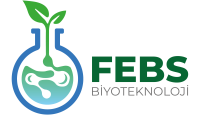Silk Protein For Astronaut Nutrition in Space
Yang et al., in their study in 2006, examined silkworm and silk peptides as an alternative to high-quality protein sources for astronauts’ long-term space missions in space programs.
Silkworm proteins are considered to be a suitable nutrient because they contain essential nutrients for humans.
“Insect food for astronauts: gas exchange in silkworms fed on mulberry and lettuce and the nutritional value of these insects for human consumption during deep space flights”Interplanetary travel likely means that astronauts must also transport ecosystems to provide nutrients and oxygen.
Past research on potential space food has been done on poultry, fish, snails, salamanders, and sea urchin larvae, and they have been shown to come with disadvantages. For example, while there is a great need for food and space in the care and feeding of poultry, meeting the appropriate water standards for aquatic creatures is a problem.
Scientists at Beihang University in Beijing state that silkworm, which is currently consumed in China, is a suitable food source for astronaut nutrition.
It is possible to use the small amount of excrement produced by insects as fertilizer in plant care in silkworm cultivation, which reproduces quickly, consumes little, and requires little space in its care.
According to this study, silkworm, which is mostly edible protein, contains twice as much essential amino acids as pork, and four times as much as milk and eggs.
In the study of Tong et al., the larvae of the silkworm moth (Bombyx mori L.), which are accepted as an animal protein source for astronauts in the bioregenerative life support system during long-term deep space explorations in the future; showed the results of suitable feeding conditions for different environments by feeding them with mulberry leaves in the first three terms and lettuce leaves in the last two terms. In addition, these study results suggest that this type of environmental approach, using the inedible biomass of plants to produce high quality animal protein, could also be applied terrestrially to provide food for people living in extreme environments such as polar regions or poor agro-ecosystems (e.g. isolated military bases, ships, submarines). In this study, the respiratory characteristics of the larvae during their development in two main physiological conditions leaf-eating and not eating were investigated. On the 3rd day of the 5th instar larvae, the nutritional compositions of silkworm powder (SP), ground, and freeze-dried silkworms including protein, oil, vitamins, minerals, and fatty acids were measured using international standard methods. The respiration rates of the larvae when eating mulberry leaves were higher than similar larvae that did not eat these leaves. A significant difference was found between the silkworms fed on mulberry leaves and the silkworms fed on lettuce stems in the 4th and 5th periods (P<0.01). The amount of CO2 inhaled by silkworms in the two physiological regimens was different from each other (P<0.01). There was also a significant difference (P<0.01) between the amount of inhaled O2 when the insects were under the two physiological states. Also, the respiratory coefficient of silkworms under the eating regime was greater than that of the no-eating regime. In this study, SP was found to be rich in total protein and amino acids; 12 essential vitamins, 9 minerals, and 12 fatty acids were detected. In addition, 359 kcal can be produced per 100 grams of SP (dry weight).
